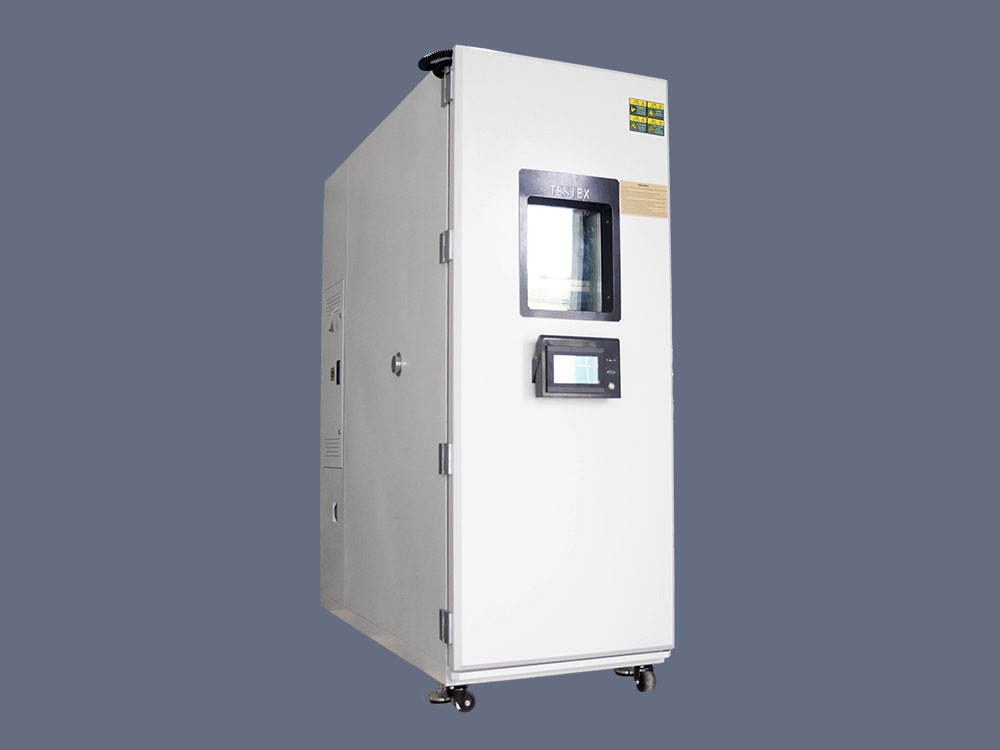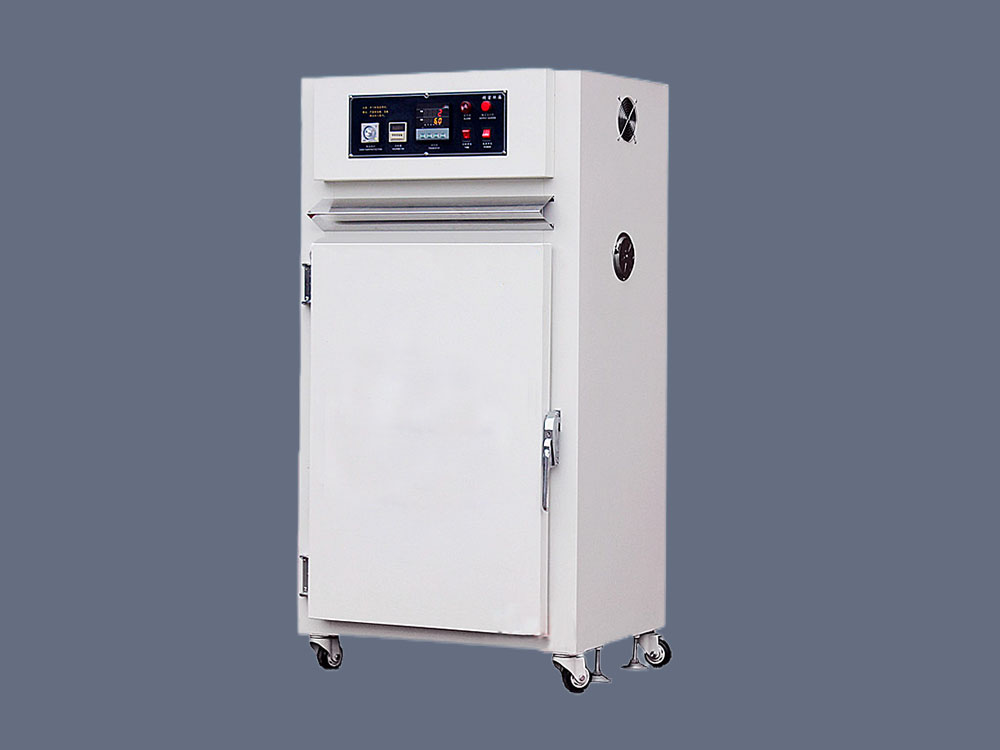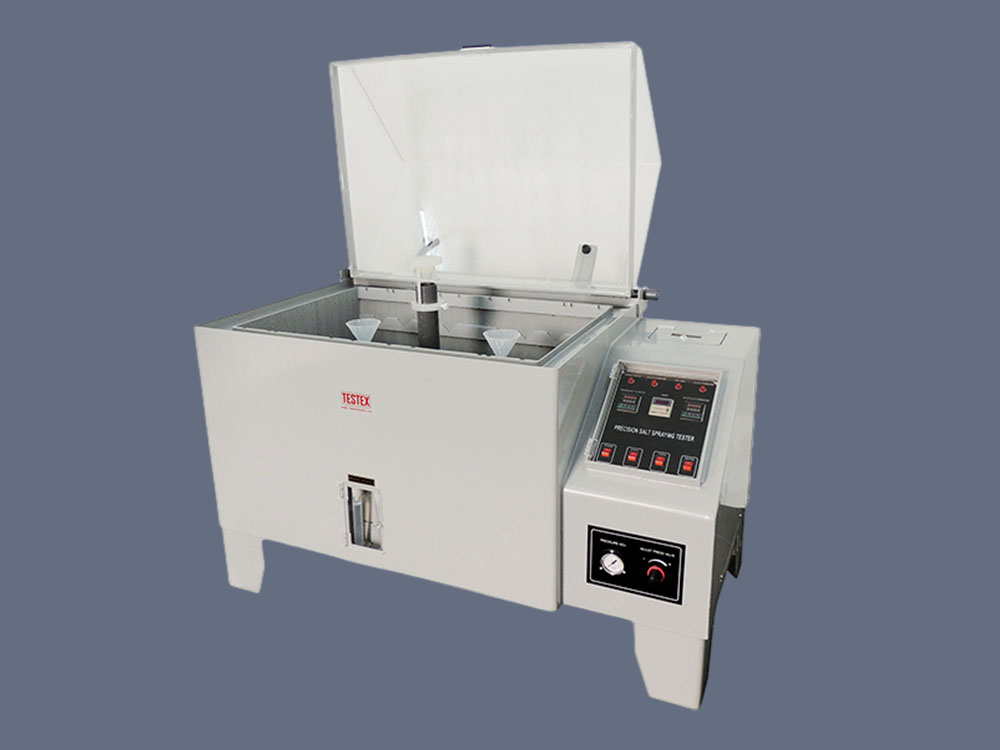Researchers use an environmental test chamber to simulate various climates. Products may encounter them in the real world. Through the product’s physical and other related characteristics of the test, to determine whether the performance of the product meets the predetermined requirements, to ensure that the product still has good performance and reliability in extreme climatic conditions.
1、Why use the environmental test chamber?
For all kinds of research institutions, enterprises, and institutions, environmental test chambers in product development, production, inspection, and other stages have a vital role:
① Evaluate the performance of the product:
The product test has different temperature, humidity, and vibration. It assesses how the product works in real environments. It ensures product performance and reliability. This sets a good foundation for the product on the market.
② Identify product design defects:
Test the product in extreme conditions. This will uncover problems and give a basis for improving the product.
③ Verify the environmental adaptability of products:
Evaluate how well products adapt to different regions. Do this by simulating the climate. Use the right temperature, humidity, and other conditions in those places.
④ Ensure product safety:
Test the products in harsh conditions, like high temperature, low temperature, and humidity. This is to assess product safety in abnormal environments and cut the risks of using them.
⑤ Improve the reliability and life of products:
Evaluate the reliability and life span of products. Do this during continuous operation through long simulated environmental tests. Provide reference for product maintenance and replacement.
2、Environmental test chamber application field
An environmental test chamber is a kind of test equipment to simulate a variety of environmental conditions, which is widely used in many industries, mainly used to simulate a variety of environmental conditions, to test the performance and reliability of products in these environments. Widely used in various industries, the following are some of the main application industries:
①Aerospace
Aerospace must simulate extreme environments. These include high altitude, low temperature, high temperature, high pressure, and more. They do this to test the performance and reliability of electronics, optics, semiconductors, metals, and wires. They also test other aircraft and spacecraft equipment. The chambers can simulate high and low temperature, humidity, and air pressure. They give precise data for the safety and reliability of aviation and spacecraft.
②Automotive industry
The auto industry needs many environmental tests. They make sure cars can perform well and be reliable in different climates. The chambers can simulate a variety of climates. They can test high and low temperature, humidity, and more. This tests auto parts. It makes cars last longer and be safer.
③Electronics industry
The electronics industry needs to test the performance and reliability of electronic products. They must do so to adapt to many different climate and environmental conditions. There are three types of test chambers. They are for rapid temperature change, high temperature, and hot, humid conditions. And they can simulate many environmental conditions, like temperature and humidity. They test semiconductors, circuit boards, LEDs, and other electronic equipment. This testing ensures their performance and reliability.
④Biotechnology industry
The pharmaceutical industry needs to research the stability and validity of drugs. They need to do this to adapt to different environments. And they can simulate many environmental conditions. They give precise test data. This data is for the research, development, and quality control of drugs.
You can use test chambers to test medical equipment. They help ensure that the equipment performs well in actual use. The chambers include: high and low-temperature, rapid temperature change, thermal shock, high and low-temperature and low-air-pressure, and walk-in stability test chambers.
In medical hygiene products, testing in chambers can simulate various conditions. These include high and low temperatures and rapid changes. Also, cold and thermal shocks and walk-in high and low temperatures. These tests can find problems with the products and let us fix them early. This helps us avoid problems in actual use.
⑤ New energy industry
The new energy industry needs to test solar panels. They need to test wind power equipment for performance. They need to do this to adapt to different climate and environmental conditions. The chamber can test for rapid temperature changes. It can also test for high and low temperatures, both humid and dry. And it can test for very cold temperatures. It can test for high and low temperatures, both humid and dry. And it can also test for these conditions in a walk-in setting. It can also test for cold and thermal shock. It can also test for high and low temperatures and low pressure. Finally, it can test for temperature, humidity, and vibration. All of these tests can simulate various climates. They provide precise data for new energy equipment. They also provide safety and reliability.
⑥New material industry
Environmental test chamber plays a vital role in the research and development of new materials.You can use high and low-temperature (hot and humid) test chambers, rapid temperature change test chambers, and small ultra-low-temperature test chambers to simulate a variety of environmental conditions, such as temperature and humidity, and test the performance and reliability of new materials in these environments. For example, new materials may need to withstand environmental conditions such as very low or very high temperatures, extreme humidity, or strong UV radiation. Furthermore, researchers can use high-voltage accelerated weathering testers to conduct accelerated weathering testing on new materials to forecast changes in material properties following extended use. These tests provide insight into the behavior of new materials in these environments to further improve their performance.
3、Summary of ChiuVention’s environmental test chambers
3.1 Constant temperature and humidity test chamber
A constant temperature and humidity test chamber is a kind of test chamber that can simulate the temperature and humidity environment of products. It is mainly used for stability testing of various materials, such as cement, paper, shoes, pharmaceuticals, fibers, and other fields.
The test chamber can simulate constant humidity, constant temperature, vacuum, and other environmental conditions.
3.2 Salt spray test chamber
The salt spray test chamber is mainly used to simulate the salt spray environment test under different humidity and temperatures. It is mainly used in the fields of paints, electroplating, and electronic components.The test chamber generates acidic and corrosive gases, enabling continuous salt spray corrosion testing of samples.
3.3 Ultraviolet light test chamber
The UV test chamber is mainly used to simulate the effects of solar radiation, sunlight irradiation, and hot and humid climates on lighting products to test the weather resistance, anti-aging, and stability of materials. It is mainly used in the testing of plastics, paints, rubber, protective coatings, and other fields.
3.4 Thermal Shock Tester -Two-Zone
This product is suitable for the safety performance test of electronic components to provide reliability tests, product screening tests, etc. At the same time, this equipment test, can improve the reliability of the product and carry out quality control of the product. High and low-temperature impact test chambers in aviation, automotive, home appliances, scientific research, and other fields of essential test equipment, assessment, and determination of electricians, electronics, automotive appliances, materials, and other products, in the high and low-temperature test temperature environment after the impact of changes in parameters and performance, the use of adaptability, applicable to schools, factories, military, research, and other units.
3.5 Thermal Shock Tester-Three Zone
Three boxes of the thermal shock test chamber are metal, plastic, rubber, electronics, and other materials industry essential test equipment, used to test the structure of the material or composite material, in an instant by the extremely high temperature and very low temperature of the continuous environment can endure the degree of the test specimen in the shortest possible time due to the thermal expansion and contraction of the chemical changes caused by the or physical damage.
3.6 Xenon lamp aging test chamber
The xenon lamp tester uses xenon lamps that can simulate the full sunlight spectrum to reproduce the destructive light waves that exist in different environments, and it can provide corresponding environmental simulation and accelerated tests for scientific research, product development, and quality control.
Researchers can use xenon test chambers to select new materials, improve existing materials, or assess changes in durability after altering the composition of the material. These chambers provide a good simulation of how materials react to different environmental conditions and exposure to sunlight. The Xenon lamp test chamber has two types: air-cooled and water-cooled. These are the two types of Xenon lamp aging test chambers.
3.6.1 Air-Cooled Light & Weather Fastness Tester
Air-cooled xenon lamp weathering chambers use a xenon lamp as a light source to expose specimens to xenon arc light and thermal radiation, evaluating their resistance to high-temperature light sources, as well as light and weathering resistance.
The air-cooled xenon weathering tester offers a wide range of applications and users can use it to test paints and coatings, rubber, plastics, pigments, waterproof materials, adhesives, fabrics, and more.
3.6.2 Water-cooled Light & Weather Fastness Tester
Weathering tester can simulate the hazards caused by sunlight, rain, and dew and test products in the light、rain、condensation、temperature、humidity, and wind climate environment of storage, transportation, and use of the performance test.
Water-cooled light and weather fastness testers are suitable for measuring quality inspection, automotive materials, coatings, rubber, pigments, adhesives, fabrics, and other scientific research institutes, technical supervision departments, and other quality testing of rubber printed products.
3.7 AtmoExplorer Temperature & Humidity Chamber
This climatic chamber is suitable for testing the heat resistance, cold resistance, dry resistance, moisture resistance, and other properties of the material. It can meet the reliability testing needs of electronic products and other fields and industries.
3.8 Laboratory Oven
Electric blast drying box for a variety of products, test products for baking, drying, curing, heat treatment, and other convenient heating.
Constant temperature drying oven is suitable for various industry fields, widely used in various industries, such as electronic components, industry, medical and health care, plastic machinery, food, colleges and universities, and scientific research part of the production workshop or laboratory, such as the baking of the goods or high-temperature test of the goods.
3.9 Electric Industrial Laboratory Oven
Various baking processes use the Industry Oven.It also does aging tests on electronic components and provides stress relief at high temperatures.
Lab oven is widely used in laboratory, laboratories, electronic communication, photoelectricity, plastic products, molds, shoes, spraying, printing, medical, aerospace higher education, and other industries.
3.10 Highly Accelerated Stress Test Chamber
Primarily used to assess the reliability of a product or material in a humid environment, the HAST High-Pressure Accelerated Aging Test Chambers accomplish this by setting and creating a variety of conditions of temperature, humidity, and pressure in a highly controlled pressure vessel.
Certain industries have adopted HAST testing as a standard and use it in aerospace, defense, automotive parts, magnet manufacturing, PCB circuit boards, and plastics.
4、The type of environmental testing:
Currently, many countries have standardized the environmental test, and have also developed similar environmental test standards, which mainly include the following environmental test items:
(1) low-pressure (high altitude) test:
The test applies to air transport in the cargo hold of the aircraft weapons, weapons used on the plateau, and air-transported weapons in the aircraft injury occurs after the rapid decline in pressure. The purpose of the test is to examine the performance of the weapon in a low-pressure environment and the impact of rapid pressure drop on the performance of the weapon. Simulation of the highest altitude up to 30000m (m), the test to take the height of the corresponding temperature value.
(2) High-temperature test:
The test weapon is in high-temperature air, but not subject to direct sunlight. Test for the hot season in an indoor or confined space or close to the engine and other sources of heat storage or use of weapons. We conduct the test only when we cannot verify the effects of high temperatures using the solar radiation test. The purpose of the test is to examine the performance of the weapon when stored or used in a high-temperature environment.
(3) Low-temperature test:
Specimens likely to be used in a low-temperature environment during their life cycle undergo the test. The test aims to determine if the specimen can withstand storage, manipulation, control, and operation in a long-term low-temperature environment.
(4) Thermal Shock Test:
The test applies to weapons that are routinely subjected to very rapid temperature changes in a predetermined area or mode of use. Bombers place bombs in electronic equipment bays, missiles, electro-optical equipment, and bomb bays on aircraft that take off from desert airports and ascend to high altitudes; they airdrop weapons from high altitudes into desert areas, and they transfer weapons from indoors to outdoors in the Arctic. Currently, we only conduct airborne thermal shock tests, and in the future, we will be able to conduct thermal shock tests from air to water. The purpose of the thermal shock test is to examine the effect of sudden changes in ambient temperature on the performance of the weapon.
(5) Solar radiation (sunshine) test:
This is a test on weapons and their manufacturing materials exposed to sunlight. Solar radiation can cause photochemical and thermal effects. In most cases, this test can replace the high-temperature test. The sunlight test examines the effects of solar radiation on the use or open storage of weapons or related materials.
(6) Rain test:
The test applies to the use of the process and may be subject to rain weapons. The rain test includes no wind when the rain test and wind when the rain test. The purpose of the rain test is to test the waterproof performance of the rain protection equipment and test the performance of the weapon during and after the rain.
(7) Moisture test:
Armaments must undergo testing for use in a warm and humid environment. Tropical areas throughout the year, the mid-latitude regions of the year with varying lengths of the season are this warm and humid environment. The purpose of the test is to test the weapon’s ability to adapt to a warm and humid environment.
(8) Anti-mould test:
Warmth and humidity are the conditions for the growth of micro-organisms, which are widely found in the tropics and mid-latitudes. Design all standard general-purpose armaments and equipment to consider the issue of mold resistance. The purpose of the test is to assess the degree of mildew and mildew on the performance of the weapon or the use of the degree of impact.
(9) Salt spray test:
Salt is very widely distributed on Earth. The ocean, the atmosphere, the ground, lake water, and rivers have salt, especially in the coastal areas of salt content is relatively large, and the ocean contains the largest amount of salt. No weapon does not come into contact with salt. Therefore, all weapons are in some form of salt environment during their life cycle. The purpose of the salt spray test is to examine the effect of a salty, humid atmosphere on the performance of the weapon, in particular the performance of the coated protective layer and the compatibility of the materials.
(10) Sand and dust test:
The test applies to all mechanical, electrical, electronic, and electrochemical armaments used in dry sand or air with a relatively high dust content. The test divides into a dust test and a sand test. The dust test uses dust and fine sand, which can get into crevices, cracks, bearings, and joints. The sand test uses sand particles of 149 to 850 μm (microns), which are large, sharp particles that can have an erosive and clogging effect, reducing the effectiveness, reliability, and serviceability of the equipment. The sand and dust test assesses the weapon’s capability for use and storage in a sandy and dusty environment.
(11)Immersion test:
Immersion test includes immersion, drip, and pressurized water test. The immersion test applies to equipment requiring watertightness and to equipment used wholly or partially submerged in water. In some cases, instead of the rain test, people may use this test to verify watertightness. The purpose of the test is to examine the ability of the weapon to remain watertight when immersed in water.
(12) Freezing rain test:
The test applies to equipment that will encounter freezing rain during normal use. The purpose of the test is to examine the effect of rain, fog, and splashing seawater on the performance of the equipment after it freezes, but also for the evaluation of de-icing devices and techniques.
5、Summary
Environmental test chambers serve as the gatekeeper of product performance and quality for many industries, providing a strong test guarantee and serving as indispensable equipment for major laboratories. Each type of test chamber has different applications and test purposes, its main role is to simulate the actual environmental conditions, the quality of the product, and comprehensive performance assessment and testing.
Environmental test chambers have a wide range of applications in various industries, they simulation of various environmental conditions for various industries to provide high-precision test data, for product performance and reliability to provide a guarantee. With the continuous development of science and technology, the application of environmental test chambers will continue to expand, to provide better testing services for more industries.
For more environmental test chamber, Please visit: https://chiuventionclimatechamber.com
For more environmental test simulation programmes,environmental testing knowledge, instrument knowledge, and environmental testing laboratory knowledge, please contact us: [email protected]



